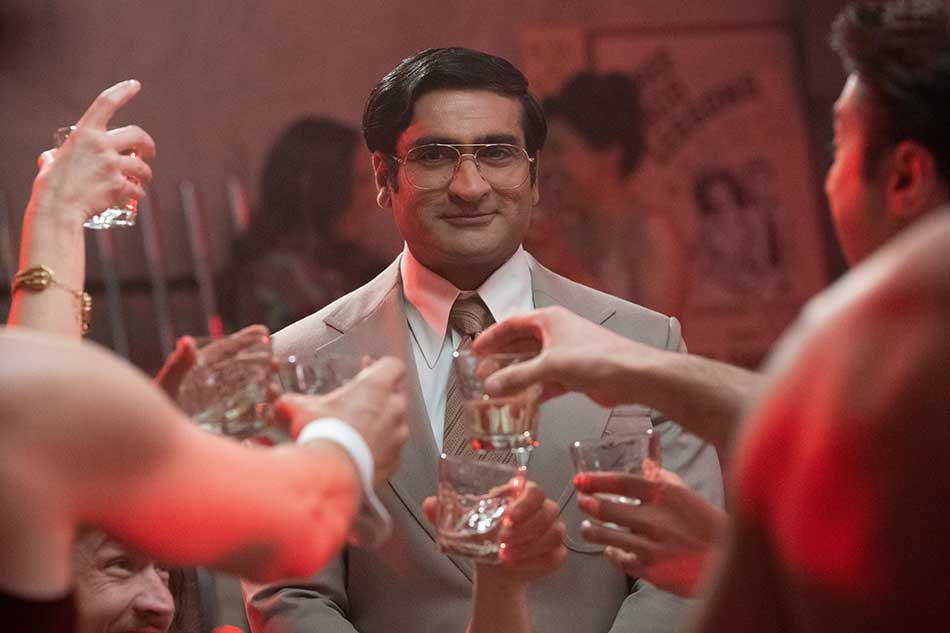'Welcome to Chippendales' Shows How the American Dream Can Get Complicated
Kumail Nanjiani plays Indian immigrant Somen, who becomes “Steve” as his male-stripper empire takes root

Welcome to Chippendales, a wild story about the man who founded the male-stripping empire, premieres on Hulu November 17. Kumail Nanjiani plays Somen “Steve” Banerjee, an Indian immigrant who launches the iconoclastic late ‘70s brand. Banerjee partnered with a producer to choreograph the show out of Banerjee’s Los Angeles club, and the act took off.
Alas, things did not end well for Banerjee or his partner.
Robert Siegel and Jenni Konner are executive producers and co-showrunners on the series.
Siegel said he was drawn to the Chippendales story because he digs true stories that don’t feel all that true. “I like stories that have a certain wildness and fun, and I’m always a sucker for sex and drugs and murder,” he said with a laugh.
Just as important, the story touched on “big themes of the American dream,” Siegel added, “racism, and what it means to be an American,” along with capitalism and feminism too.
Welcome to Chippendales provided “a big, great, juicy canvas to really say something,” he added, “without being preachy or boring.”
Konner, who previously worked on Girls, came to the project later on, and was drawn to Siegel’s pilot script. “I read so many scripts and I thought it was so great and so smart,” she told B+C. “And the story was so insane. Like, you can’t believe it. Everything that happens, you’re like, that didn’t really happen. And it did really happen.”
Broadcasting & Cable Newsletter
The smarter way to stay on top of broadcasting and cable industry. Sign up below
Murray Bartlett, Juliette Lewis and Annaleigh Ashford are also in the cast. Bartlett, who played Armond in season one of The White Lotus, plays choreographer Nick.
Siegel mentioned Banerjee following “the classic immigrant success story,” which meant working at a gas station for a number of years, then buying a gas station, and maybe a second one.
The idea of success shifted over time for Banerjee as he pumped gas in Los Angeles. He considered Hugh Hefner and Walt Disney his heroes.
“It’s one thing to have the American dream when you’re in Bombay,” said Siegel. “But when you’re in Los Angeles…”
Siegel noted how Banerjee’s family “is simultaneously proud of him and incredibly ashamed of him. For a writer, it’s a great starting point.”
Siegel, Konner and Nanjiani exec produce with Matt Shakman, Emily V. Gordon, Nora Silver and Rajiv Joseph.
Watching the male dancers on the set gave the producers an idea of how the Chippendales dancers drew women to the clubs, got them up on their feet, and turned the whole thing into a craze, and an odd bit of pop culture history. “It’s hard to imagine when you look at the pictures now–it looks so silly and cheesy,” said Konner. “But when we saw these people on stage, all of a sudden, it was like, this is what happened.”
A review at The Hollywood Reporter was mixed, “All the pieces for a fine drama would seem to be here. The deteriorating relationships between the characters are charted in legible degrees. Each major development is carefully foreshadowed, and each individual chapter moves fast enough to keep our interest from wandering. But the entire series feels constructed from the outside in. Steve’s arc follows a neat rise-fall structure, but is his interior journey that of a good man who went bad, or of an already bad man who went badder à la Walter White? Is Steve’s rift with his family back in India the cause or result of his poisonous greed? Welcome to Chippendales does not furnish answers.”
Siegel suspects some viewers will tune in for the cheese factor, but will come away with a bit of substance. “Whether you come for the mullets and the cocaine, and that’s all you take away from it, great,” he said. “But if you walk away thinking about the immigration experience or something else, that’s even better.” ■
Michael Malone is content director at B+C and Multichannel News. He joined B+C in 2005 and has covered network programming, including entertainment, news and sports on broadcast, cable and streaming; and local broadcast television, including writing the "Local News Close-Up" market profiles. He also hosted the podcasts "Busted Pilot" and "Series Business." His journalism has also appeared in The New York Times, The L.A. Times, The Boston Globe and New York magazine.

